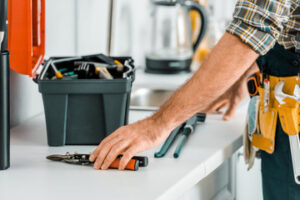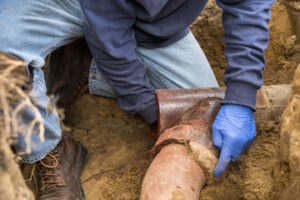Starting Ranger Plumbing Company involves making a large investment. It is important to plan for this by setting up the right business structure.
Choosing the right colors for your brand is crucial to creating a strong plumbing company. The colors you choose should reflect your target market and industry trends.
Installation

Plumbing is one of the most important systems in a building, connecting water to fixtures like sinks, toilets, and showers. It’s also responsible for removing waste and preventing sewer gases from entering living spaces. Plumbers install, repair, and replace pipes and fixtures. They may also work on ventilation, sprinkler systems, and water filtration. They are often trained on new techniques, materials, and technology to keep up with industry standards.
The demand for plumbers is growing as people are increasingly concerned about their home’s plumbing. They are looking for more environmentally friendly and sustainable solutions. Many plumbers specialize in a particular service such as water heater installation or sewer replacement. They can use their skills to make money by providing these services in their local area.
A successful plumbing business requires a high-quality, professional logo that stands out from the competition. A well-designed logo shows your clients that you are a professional and can be trusted. It also communicates what your business is all about in a clear and concise manner.
The first step to starting a plumbing company is choosing the right legal structure. Options include sole proprietorship, limited liability company, or corporation. Each option has unique advantages and disadvantages. For example, sole proprietorship is easy to set up, but it exposes your personal assets to business debts and liabilities. A limited liability company offers better liability protection, but it comes with additional tax requirements. Finally, a corporation provides robust liability protection but can be complicated to set up and maintain.
When hiring plumbing contractors, it’s crucial to consider their license and insurance coverage. You’ll want to be sure that the contractor you hire is licensed in your state and has adequate general and commercial liability insurance. You should also ask if they have workers’ compensation insurance, which protects employees in the event of a workplace injury.
A plumber’s job is physically demanding and can require a lot of energy. They are often on their feet all day and often lift heavy objects. As a result, they need to be healthy and fit. This can help prevent injuries and improve their productivity.
Repair
A plumbing company offers repair services for a wide range of issues, including dripping faucets, discolored water, low water pressure, and leaky pipes. The best plumbing contractors can diagnose the problem and find the most effective solution quickly. They should also offer quality parts that will last for a long time and reduce the need for costly replacements in the future.
When choosing a plumbing contractor, consider their response time and whether they have the proper insurance to cover damage that may occur during work. A reputable plumbing company will provide comprehensive service and guarantee their work. They should also have an office close to your home so that they can respond to calls promptly.
You should also determine the best business structure for your plumbing company. A sole proprietorship is simple to set up and offers minimal liability protection, while an LLC provides robust asset protection and flexible tax options. You can also choose to form a corporation, which involves more paperwork but offers greater liability protection. An insurance policy that includes general liability, workers’ compensation, and commercial auto is a must.
Maintenance
When a plumbing company is hired to repair a plumbing issue, they should be able to quickly identify the problem and recommend the best solution. This can involve using visual aids such as a plumbing endoscope or eco-friendly dyes to find the source of a leak in a pipe. They can also repair damaged faucets and water heaters, and replace defective toilet parts. Other services include caulking, sealing, and gaskets.
To build a successful plumbing business, you need to develop a solid business plan that includes a detailed description of your business and its goals. This document is often a requirement when seeking small business loans, and it helps potential investors understand your vision for the business. It should also include a thorough market analysis, competitor comparisons, and your unique selling point (USP).
A well-crafted business plan is an essential step in starting a new plumbing business. It will help you determine how much money you need to start the business and ensure that you are pursuing a profitable market. You can get a free business plan template online to help you get started. A good plan will also help you decide on the best legal structure for your plumbing company. For example, many plumbers choose to operate as a sole proprietorship for simplicity or an LLC to separate personal and business liabilities.
One of the most important things you can do as a plumber is to provide excellent customer service. This involves ensuring that your customers are satisfied with their experience and that you treat them with respect. It also means providing quick responses and being available to answer any questions. This will help you build trust with your clients and encourage them to schedule future services.
It is important to have the proper insurance coverage for your plumbing company. This will protect you against any damages that may occur during the course of a job and protect you from being sued for negligence. In addition to general liability, you should consider getting a surety bond and workers’ compensation.
When you’re starting a plumbing business, it’s crucial to have the right tools and equipment. This will allow you to perform quality work that lasts. You can also save money by purchasing used tools instead of new ones. This will help you cut down on your initial investment while still getting the best tools for the job.
Replacement
When repairs are not enough to solve the issue, you may need to replace your plumbing system. A plumber can give you a quote after visiting your home and examining the problem. Make sure the quote includes everything from materials to labor costs. You can also get a repiping service, which will provide you with new pipes that are resistant to corrosion and will last longer.
When it comes to hiring a good team of plumbers, you should look for candidates with great customer service skills and reliability. The interview process should include hands-on assessments to assess plumbing skills and a strong work ethic. You should also ask about their licensing, certifications, and references. You can find great staff in places like Indeed, trade school job boards, or local community boards.

